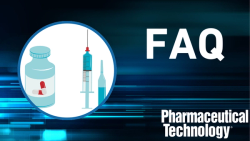
OR WAIT null SECS
- About Us
- Advertise
- Contact Us
- Editorial Info
- Editorial Advisory Board
- Do Not Sell My Personal Information
- Privacy Policy
- Terms and Conditions
© 2025 MJH Life Sciences™ , Pharmaceutical Technology - Pharma News and Development Insights. All rights reserved.
The Growth Of ODTs
Pharmaceutical Technology Europe
Orally disintegrating tablets (ODTs) are growing in popularity and their market value could exceed $13 billion in sales by 2015, based on current global growth trends.
Orally disintegrating tablets (ODTs) are growing in popularity and their market value could exceed $13 billion in sales by 2015, based on current global growth trends.1 Market studies have indicated that more than half of the patient population prefers ODTs to other dosage forms.2 Most consumers would also ask their doctors for ODTs (70%), purchase ODTs (70%) or prefer ODTs to regular tablets or liquids (over 80%).3
The growth in the popularity of ODTs reflects the growth in the elderly and infirm population, who often find it difficult or unpleasant to take conventional tablets. ODTs separate in the mouth in contact with saliva, making it easy for a person to swallow the tablet without drinking water. They are also a convenient dosage form for other people, such as business travellers, as they can be taken without water, or for those who need to take tablets to combat travel sickness.
Over the past few years, there have been several innovations that have improved the appeal of ODTs. Key developments have been improvements in the speed of dispersal of ODTs, as well as the growing use of non-hygroscopic, zero-calorie sweeteners, with taste-masking properties, which have helped ODTs to be more palatable. Improvements in the dispersion speed will, in turn, facilitate higher drug loading. This can be combined with a well-selected binder to retain the non-hygroscopic profile, resulting in hard tablets with a high dilution potential, which will also help improve patient compliance.
The challenges of ODTs
The challenges of developing ODTs are similar to those for conventional solid oral dosage; for instance, one of the main issues for both forms is the need to establish compatibility of the active drug substance with both the excipients and process. For ODTs specifically, the key challenges are producing tablets with rapid disintegration and overcoming the bitter taste exhibited by many actives. These can be overcome, however, by using a good selection of sweetener/binder systems, combined with a super-disintegrant.
To overcome the bitter taste, sweeteners and flavours are often included to achieve a palatable formulation Additionally, a pleasant mouthfeel is also important. Again, manufacturers are approaching this using a sweetener/binder system with the desired characteristics.
At Cargill, we've overcome the challenges relating to ODTs by using a wet granulation of erythritol as an excipient. This excipient is non-hygroscopic, contributes to good mouthfeel and has taste-masking properties, and robust tablets can be made via wet granulation, combined with a disintegrant to provide faster disintegration. Erythritol also has taste-masking properties and is noncariogenic (toothfriendly), making it an effective ingredient for tablets that need to stay in the mouth for some seconds while dissolving.
In our research, using a placebo with a hardness of 148 versus our Zerose erythritol and C*Pharm IsoMaltidex formulation, including 2% disintegrant, with the same hardness, there was a significant decrease in disintegration time, from 127 seconds to 95 seconds.4
Another challenge is that ODTs are potentially less robust than conventional solid-oral dosage forms, given their formulation to achieve rapid disintegration, so packaging requirements, such as aluminium blister packs need to be considered.
In the future, innovations and developments in the ara of ODT will be around marketing and awareness relating to ODTs, as much as in particular technological solutions. Raising awareness of ODTs amongst healthcare professionals and developing market segmentation for specific end users will also be crucial.
References
1. Orally Disintegrating Tablet and Film Technologies — 6th Edition (Technology Catalysts International, September 2010).
2. K. Deepak, Tablets and Capsules, 7 , 30–35 (2004)
3. D. Brown, Drug Deliv. Technol., 3 (6), 58–61 (2001).
4. Internal Cargill research conducted by Cargill's Pharma Application Centre team.
Related Content:



